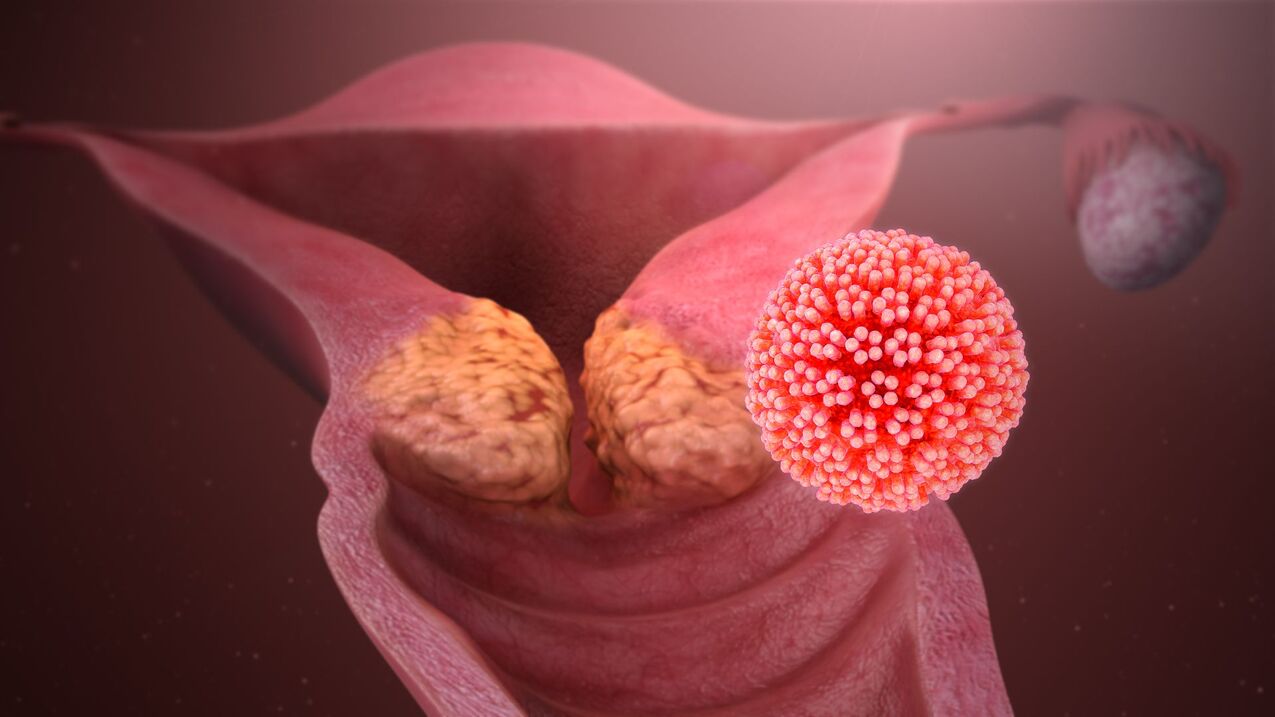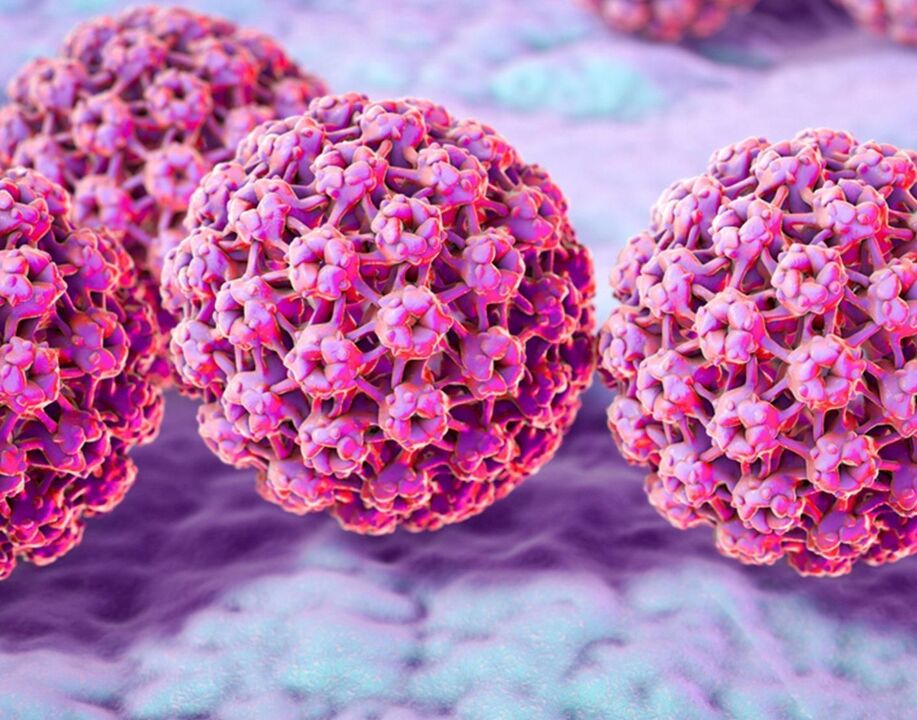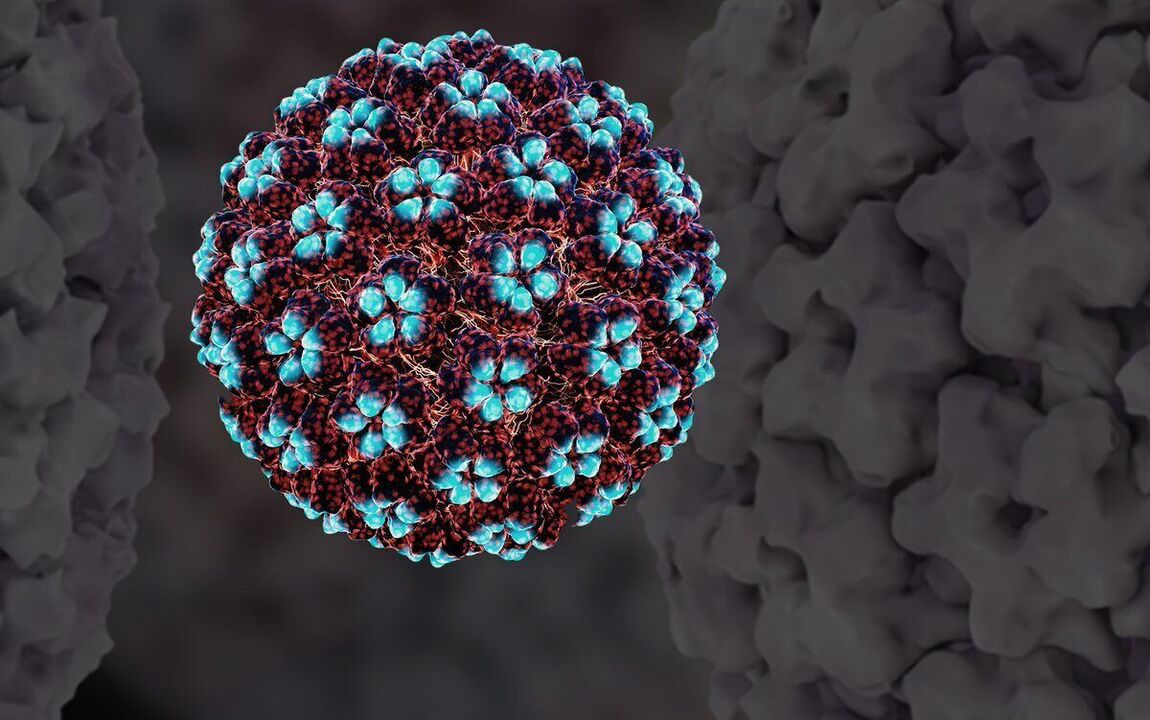Human papillomavirus (HPV) is an extremely common sexually transmitted infection in the world.
The peculiarity of this infection is that it may not manifest for many years, but eventually lead to the development of benign (papilloma) or malignant (cervical cancer) diseases of the genitals.

Types of human papillomavirus
More than 100 types of HPV are known. Types are peculiar "subspecies" of a virus that differ from each other. Types are identified by numbers assigned to them as they are discovered.
The high oncogenic risk group consists of 14 types: 16, 18, 31, 33, 35, 39, 45, 51, 52, 56, 58, 59, 66, 68 (these types are associated with the development of cervical cancer).
In addition, types of low oncogenic risk are known (mainly 6 and 11). They lead to the formation of anogenital warts (genital warts, papillomas). Papules are located in the mucosa of the vulva, in the vagina, in the perianal area, in the skin of the genitals. They almost never become malignant, but lead to significant cosmetic defects in the genital area. Warts on other parts of the body (hands, feet, face) can also be caused by these types of viruses or they can have different origins. In the following articles, we will discuss "high-risk" and "low-risk" types of HPV separately.
Human papillomavirus infection
The virus is transmitted mainly through sexual contact. Almost all women become infected with HPV sooner or later: up to 90% of sexually active women will develop this infection in their lifetime.
But there is good news: the majority of those infected (about 90%) will get rid of HPV without any medical intervention within two years.
This is the normal course of the infectious process caused by HPV in the human body. This time is enough for the human immune system to get rid of the virus completely. In such a situation, HPV will not harm the body.That is, if HPV was detected a while ago, and now it is not, this is perfectly normal!
It must be borne in mind that the immune system works in different people at "different speeds". In this respect, the speed of getting rid of HPV can be different for sexual partners. Therefore, a situation is possible when HPV is detected in one partner and not in the other.

Most people become infected with the HPV virus shortly after they become sexually active and many will never know they have been infected with the HPV virus. Permanent immunity does not form after infection, therefore, it is possible to re-infect both with the same virus that has already been treated and with other types of virus.
"High risk" HPV is dangerous because it can lead to the development of cervical cancer and some other types of cancer. High-risk HPV does not cause other problems.
HPV does not lead to the development of inflammation of the vaginal / cervical mucosa, menstrual disorders or infertility.
HPV does not affect the ability to conceive and conceive.
A "high risk" baby HPV is not transmitted during pregnancy and childbirth.
Diagnosis of human papillomavirus
It is practically pointless to test for HPV for a high oncogenic risk before the age of 25 (except for women who start having sex early (before the age of 18)), as it is now very likely that a virus will be detected that willleave the body alone.
After 25-30 years, it makes sense to do an analysis:
- together with cytological analysis (PAP - test). If there are changes in the PAP - test and "high risk" HPV, then this condition requires special attention.
- Long-term persistence of HPV "high risk" in the absence of cytological changes also requires caution. Recently, the sensitivity of the HPV test in the prevention of cervical cancer has been shown to be higher than the sensitivity of the cytological uterus, and therefore the determination of HPV alone (without cytology) has been approved as a stand-alone study for the prevention of cervical cancer. of the womb in the United States. However, in our country an annual cytological examination is recommended, so the combination of these two studies seems reasonable.
- after treatment of dysplasia / precancerous cancer / cervical cancer (the absence of HPV in the analysis after treatment almost always indicates successful treatment).
For the study, it is necessary to take a smear from the cervical canal (it is possible to study the material from the vagina, however, as part of the screening, it is recommended to take the material from the cervix).
The analysis must be given:
- Once a year (if "high-risk" HPV has previously been detected and tested for cytology).
- 1 time in 5 years if the previous analysis was negative.
It is almost never necessary to be tested for low-risk HPV. If there are no papillae, then this test does not make sense at first (virus transmission is possible, there is no cure for the virus, so what to do next with the result of the test is unknown).
If there are nipples, then:
- They are most often caused by HPV.
- should be deleted regardless of whether we find formulas 6/11 or not?
- if we get a smear, then directly from the nipples themselves and not from the vagina / cervix.
There are tests to detect different types of HPV. If you do periodic HPV testing, look for specific types in the test. Some labs do research only on types 16 and 18, others - on all types together. It is also possible to perform a test that will detect all 14 types of "high risk" virus in quantitative form. Quantitative characteristics are important in predicting the likelihood of developing precancerous and cervical cancer. These tests should be used in the prevention of cervical cancer and not as a stand-alone test. Analysis for HPV without cytological results (PAP test) often does not allow conclusions to be drawn about the patient's state of health.
There is no such thing as an analysis that will determine whether the virus in a particular patient will "leave" or not.

Treatment of human papillomavirus
There is no medical cure for HPV. There are treatments for diseases caused by HPV (papillomas, dysplasia, precancerous cancer, cervical cancer).
This treatment must be performed with surgical methods (cryocoagulation, laser, radio knife).
No "immunostimulants" are associated with the treatment of HPV and should not be used. None of the widely known drugs in our country has passed sufficient tests to show their effectiveness and safety. None of the protocols / standards / recommendations include these drugs.
The presence or absence of "erosion" of the cervix does not affect the course of HPV treatment. You can read more about those situations where corrosion needs to be addressed in the article "Corrosion or not corrosion? ".
If the patient has no complaints, and there are no papillomas / changes in the cervix during the colposcopy and according to the PAP test, no medical procedures are needed.
It is only necessary to repeat the analysis once a year and to monitor the condition of the cervix (annual PAP test, colposcopy). In most patients, the virus will "leave" the body on its own. If it does not go away, it is not at all necessary that it will lead to the development of cervical cancer, but control is necessary.
Sexual partner treatment is not required (except in cases where both partners have genital papillomas).
Prevention of human papillomavirus infection
Vaccines have been developed that protect against HPV types 16 and 18 (one of the vaccines also protects against types 6 and 11). HPV types 16 and 18 are responsible for 70% of cervical cancers, which is why protection against them is so important. Regular vaccination is used in 45 countries around the world.
Condom (does not provide 100% protection).
The only method that provides 100% protection is abstinence from sexual intercourse. By no means do I want to convey that I recommend for the mother to be inactive.














































































